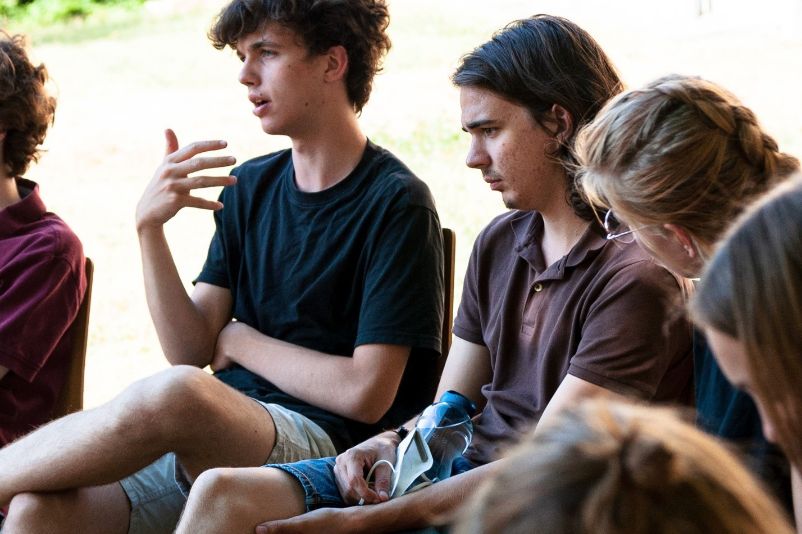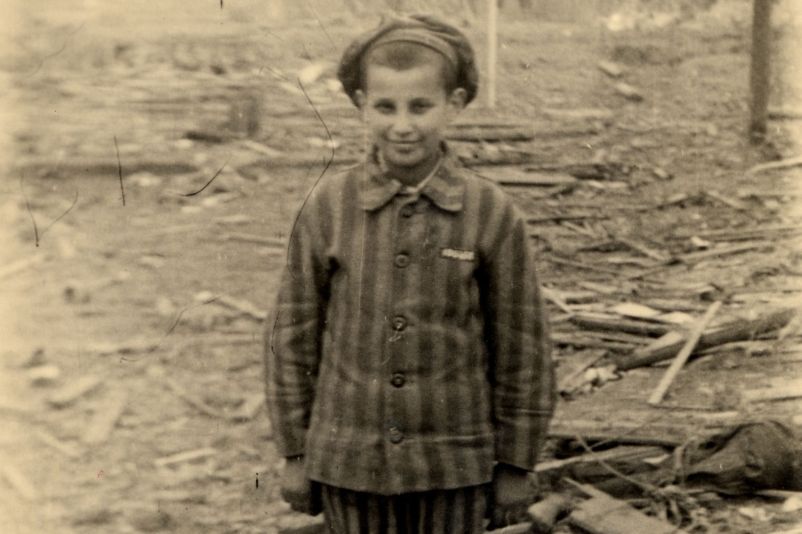On this page you will find suggestions for preparing your group, theme-specific material, lesson plans, and digital learning applications.

Encouraging a critical awareness of history — without exam pressure
Educational accompaniment by our staff not only serves to impart knowledge of history at the historical site. It also provides especially young people with support in processing the visit to the former concentration camp emotionally and cognitively.
Our aim is to encourage participants to explore and reflect on the history in order to promote the development of a critical awareness of history. The voluntary nature of each individual’s participation is essential for this development.
We accordingly consider work assignments aimed at testing participants on their historical knowledge unsuitable. Please refrain from using this method. It would distort the participants’ view of the overarching interconnections we think it is especially important to convey.
Here you will find a summary of general recommendations for preparation and follow-up.
Asking about expectations—identifying preconceptions
In addition to preparation with regard to content, it is also important to talk to school pupils about what their expectations are concerning the memorial. That is because many people have preconceptions about concentration camps that have been shaped by certain iconic images. Such images can lead to unrealistic expectations and even fears.
It is very important for participants to reflect on their own expectations before visiting the memorial. For this aspect of their preparation, school pupils can think about the following questions. One possibility is to have the pupils discuss the questions first in small groups and later as a class.
- What is the purpose of memorials?
- What are your expectations with regard to the visit to the memorial?
What do you assume you will see there? What questions and/or misgivings or fears do you have?

Basic knowledge of the “National Socialist People’s Community”
Why were there concentration camps?
To prepare for a visit to the memorial on the cognitive level, we recommend focusing on the National Socialist ideology and the concept of the so-called people’s community. Grasping this concept—which comprised integration and identification on the one hand, exclusion, persecution, and annihilation on the other—is essential to understanding the function of the concentration camps.
Here you will find a set of materials including a text, and possible discussion points to help you prepare for the visit.

Online exhibition "Children and teenagers in the concentration camp" - Curriculum for a school lesson
This material can be used in class to prepare for a visit to the memorial or as a more in-depth study after the visit. It is suitable for pupils of around 15 years or older (all school types) and may be used in one to two individual lessons (45 min.) or in a double lesson (90 min.).
Lessons based on this material will help pupils acknowledge the contexts of a childhood in the National Socialist era and therefore the concentration camps, as they deal with the fates of children and teenagers from very different backgrounds close to their own age or younger. Through this, the broad level of persecution of all age groups as well as the racist imagery of the National Socialists will become clearer - especially by the study of individual biographies.

